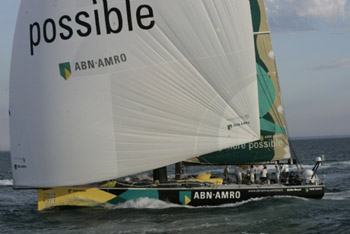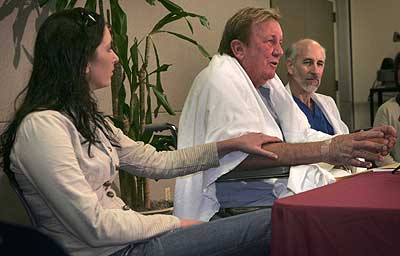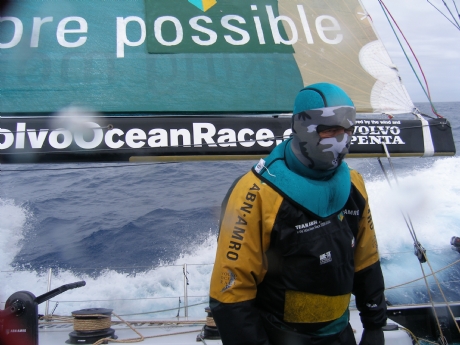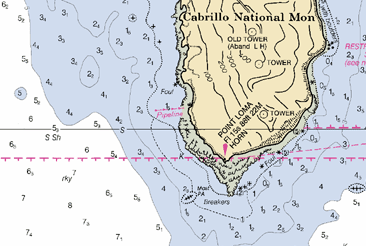VOR: ABN AMROs Win Again, Synergy Out Until Baltimore, Cayard Defends Keels
Posted by John Callender on January 29th, 2006 at 8:51 am
The two ABN AMRO boats went 1-2 in Leg 2 of the Volvo Ocean Race (again), giving them a solid lead in the overall standings. Two boats (Brasil 1 and Ericsson) withdrew with gear failures, and one (ING Real Estate Brunel, now to be renamed Brunel Teamwork), has announced they will skip the next three legs and rejoin the race in Baltimore. With funding for the last-place team being tight, and the opportunity now to optimize the boat for the presumably lighter winds to be found late in the series, the theory is that this will deliver more bang for the boat’s sponsorship buck than continuing to trail the leaders around the world.
Meanwhile, in a press conference in Melbourne, Pirates skipper Paul Cayard defended the canting-keel technology that has knocked his boat out of contention for the last two legs running. Said Cayard:
Canting keel technology is smart technology. It allows you to keep a boat light (which is fast) yet have high stability which translates into horsepower and speed. This technology will be the standard for the entire marine industry, racing and cruising, in 10 years time.
Personally, I have a hard time believing that. It’s true that racing systems tend to work their way down to the cruising fleet, but I can’t see how a recreational sailboat industry that is currently losing market share to more user-friendly, if less aesthetically satisfying, nautical pursuits like powerboats and PWCs is going to embrace a complex, expensive, and potentially scary technology like canting keels, at least outside the high-performance racing segment.
Photo: That’s ABN AMRO One approaching the Leg 2 finish in Melbourne.


